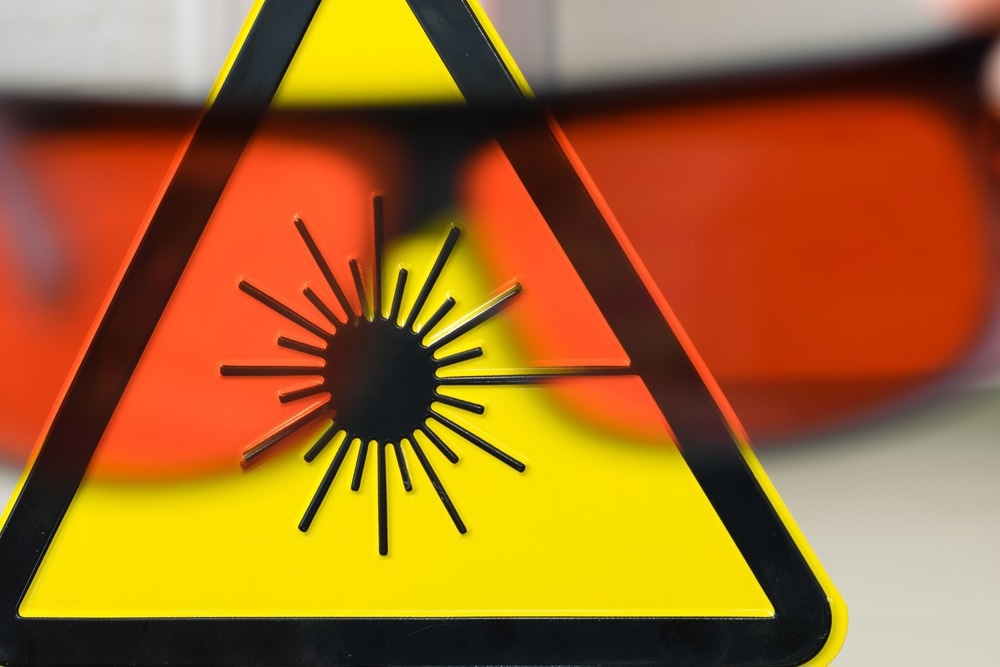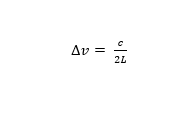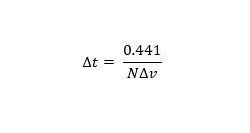Laser mode locking generates ultrashort pico- and femtosecond pulses by establishing phase uniformity among intrinsic cavity modes. This article overviews the fundamentals of laser mode locking, its underlying principles, different methods, and recent developments in this field.

Image Credit: FrankHH/Shutterstock.com
What is Laser Mode Locking?
Laser mode locking is an ingenious technique that enables the generation of ultrashort pulses of light. While a standard continuous-wave (CW) laser emits a constant output beam, a mode-locked laser produces a train of ultrashort pulses, which can reach durations on the order of femtoseconds (10-15 seconds) or picoseconds (10-12 seconds). These exceptional timescales unlock a domain of ultrafast science and technology with applications across disciplines.
Laser mode locking depends on establishing a fixed phase relationship or coherence between the inherent longitudinal modes of the laser cavity. This periodic constructive interference produces an intense burst of light in the form of a short pulse.
Since its introduction in the 1960s, laser mode locking has seen continuous advancements, expanding its applications from corneal eye surgery and micromachining to optical computing and two-photon microscopy, demonstrating its continuous evolution of speed, power, and precision.
The Underlying Theory of Laser Mode Locking
In a laser cavity, the interaction of two light waves moving in opposite directions creates standing waves, forming a set of discrete frequencies known as longitudinal modes. With an intermodal spacing of Δν, these modes can interfere destructively or constructively based on their phase relationship.

(Where c is the speed of light and L is the resonator length)
When in-phase, constructive interference results in the generation of ultrashort pulses, i.e., laser mode locking, with pulse separation determined by the round-trip time:

The pulse duration depends on the number of modes oscillating in phase (N) and the shape of each pulse. The minimum pulse duration (Δt) for pulses exhibiting a Gaussian temporal shape is given by:

Where 0.441 represents the "time-bandwidth product" of the pulse, which varies based on the pulse shape. A hyperbolic-secant-squared (sech²) pulse shape is typically considered for ultra-short pulse lasers, yielding a time-bandwidth product 0.315.
Methods for Laser Mode Locking
Active Laser Mode Locking
Active laser mode locking involves periodically modulating resonator losses or round-trip phase changes using electro-optic or acousto-optic modulators. Synchronizing this modulation with resonator round trips can generate ultrashort pulses, usually with picosecond (10-12) durations.
The pulse duration is governed by a balance between pulse broadening due to factors like limited gain bandwidth and pulse shortening through the modulator.
Passive Laser Mode Locking
Passive laser mode locking via a saturable absorber produces shorter femtosecond (10-15) pulses. This is quite achievable as the saturable absorber driven by short pulses modulates resonator losses faster than an acousto-optic or electro-optic modulator.
This enables pulse durations well below the recovery time of the absorber, resulting in femtosecond pulses. However, achieving consistent self-starting laser mode locking is sometimes not guaranteed.
Recent Research and Development
Caltech's Nanophotonic Chip Approach to Ultrafast Laser Mode Locking for Portable Diagnostics
In a recent study published in Science, Caltech researchers demonstrated an innovative approach to develop highly efficient ultrafast lasers on nanophotonic chips.
The laser mode locking miniaturization in femtosecond intervals enables the investigation of rapid natural phenomena, such as molecular bond dynamics and light propagation. However, the current state-of-the-art mode-locked lasers are large, expensive, and limited to laboratory settings. Therefore, the researchers aimed to revolutionize ultrafast photonics by transforming the large laser mode locking systems into chip-size devices that can be mass-produced and deployed in the field.
The team combined III-V semiconductors' high laser gain with thin-film lithium niobate (TFLN) nanoscale photonic waveguides to create a mode-locked laser emitting a peak power of 0.5 watts.
This laser mode locking setup generates ultrafast lasers with unique properties beyond conventional ones, enabling potential applications in precision sensing, disease diagnosis using cell phones, and chip-scale atomic clocks for navigation in GPS-compromised environments.
Spatiotemporal Laser Mode Locking for High-Energy Pulses with Single-Mode Quality
In a study published in Advanced Photonics, Swiss researchers introduced a novel approach to generating ultrashort high-energy pulses with single-mode beam quality in mode-locked fiber lasers, addressing the power level challenge associated with small-core single-mode fibers.
This method involves nonlinear beam cleaning in a multi-mode laser cavity, where spatiotemporal laser mode locking balances spatial and temporal effects, allowing the setup to reach high-energy pulses without needing external amplification.
The design enables the production of sub-100 femtosecond (10-15) pulses with high pulse energy (>20 nJ) and excellent beam quality in a compact and cost-effective configuration, representing a significant advancement in ultrashort pulse generation from fiber lasers.
Passive Laser Mode Locking in All-Fiber Format Via Dissipative Soliton Resonance Mechanism
A study published in Light: Science & Applications introduced an innovative solution—a visible-wavelength passively mode-locked all-fiber laser. They employed the dissipative soliton resonance mechanism to replace the conventional expensive and bulky oscillators, such as Ti:sapphire, for visible-spectrum ultrafast lasers. This approach enabled the generation of stable, laser mode locking pulses in a large, normal-dispersion fiber cavity, offering a compact, cost-effective, and maintenance-free alternative.
The 635 nm all-fiber laser, employing a Pr/Yb codoped ZBLAN fiber for visible spectrum gain and a nonlinear amplifying loop mirror for laser mode locking within a figure-eight cavity, produced picosecond pulses, representing a significant advancement toward miniaturized ultrafast fiber lasers in the visible spectrum.
The researchers envision that this technique holds promise for applications in visible light communications, laser material processing, femtosecond laser-frequency comb technology, biomedicine, micro imaging, and ultraviolet ultrafast generation research.
Future Outlooks
While the fundamental dynamics persist, ongoing advancements in performance and precision, driven by scientific insight and engineering innovation, are expected to propel laser mode locking into new frontiers of cutting-edge technologies and discoveries in the coming decades.
More from AZoOptics: Exploring Semiconductor Lasers for Telecommunications
References and Further Reading
Guo, Q., Gutierrez, B. K., Sekine, R., Gray, R. M., Williams, J. A., Ledezma, L., ... & Marandi, A. (2023). Ultrafast mode-locked laser in nanophotonic lithium niobate. Science, 382(6671), 708-713. https://www.doi.org/10.1126/science.adj5438Top of Form
Teğin, U., Rahmani, B., Kakkava, E., Psaltis, D., & Moser, C. (2020). Single-mode output by controlling the spatiotemporal nonlinearities in mode-locked femtosecond multi-mode fiber lasers. Advanced Photonics, 2(5), 056005-056005. https://doi.org/10.1117/1.AP.2.5.056005
Zou, J., Dong, C., Wang, H., Du, T., & Luo, Z. (2020). Towards visible-wavelength passively mode-locked lasers in all-fibre format. Light: Science & Applications, 9(1), 61. https://doi.org/10.1038/s41377-020-0305-0
Dr. Rüdiger Paschotta. (2023). Mode Locking. [Online]. Available at: https://doi.org/10.61835/dm2
Ibrahim Muhammad, B. (2019). Cladding Pumped Thulium-Ytterbium Short Pulse Fiber Lasers. IntechOpen. https://doi.org/10.5772/intechopen.81060
R. Paschotta. (2008). Field Guide to Laser Pulse Generation, SPIE Press, Bellingham, WA. [Online]. Available at: https://spie.org/publications/fg14_p33-36_mode_locking?SSO=1
Disclaimer: The views expressed here are those of the author expressed in their private capacity and do not necessarily represent the views of AZoM.com Limited T/A AZoNetwork the owner and operator of this website. This disclaimer forms part of the Terms and conditions of use of this website.